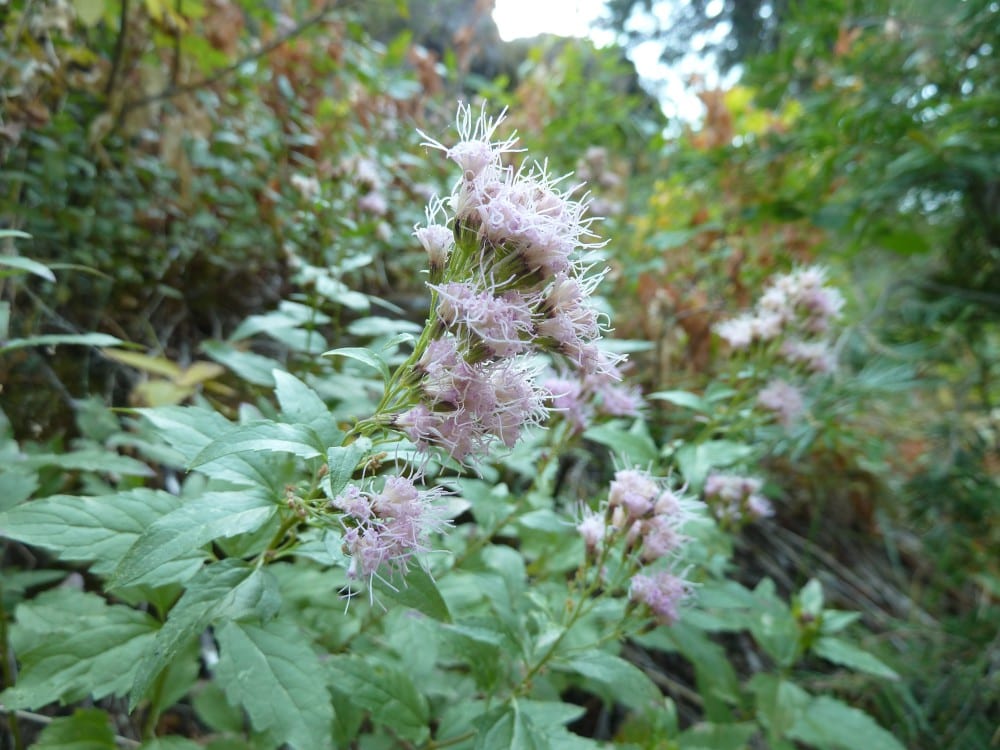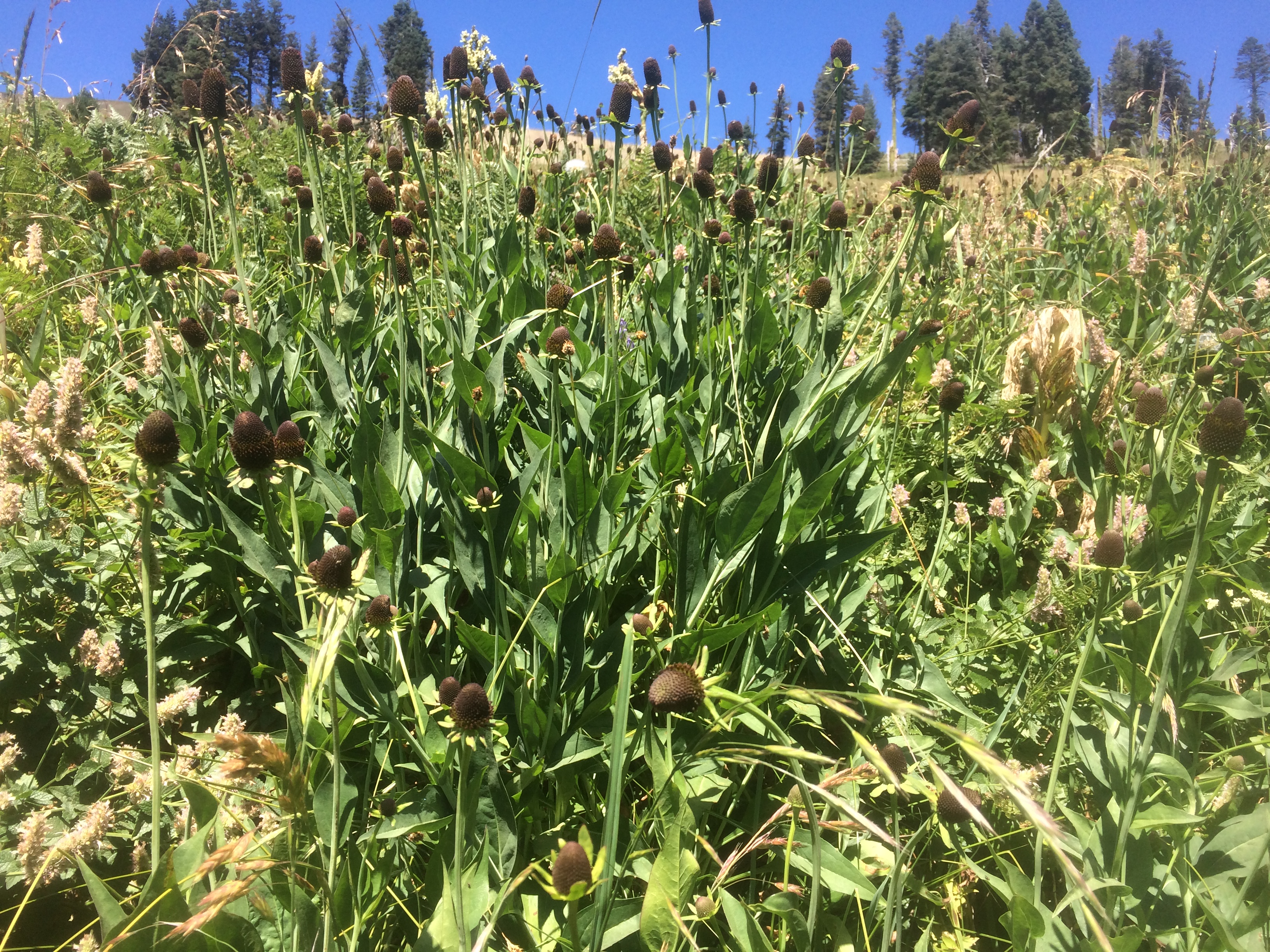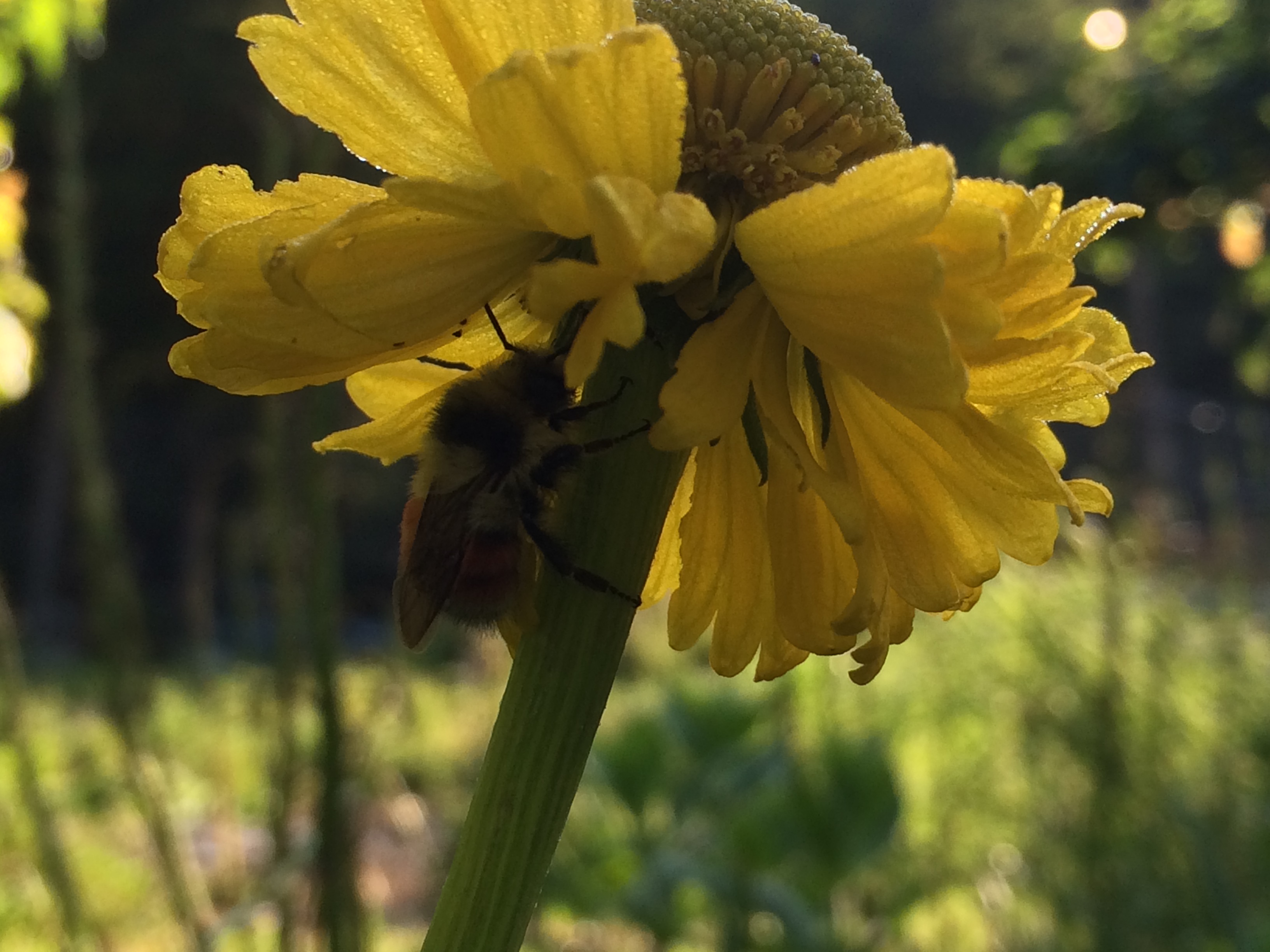Protecting Pollinators


Written by ksseeds-admin on . Posted in Uncategorized.


Written by ksseeds-admin on . Posted in Uncategorized.


Native wildflowers of the Klamath-Siskiyou
In most commercial wildflower seed packets the term “wildflower” is often used to refer to species that naturalize easy, or in other words, species that can can take over quickly and flower profusely, spreading themselves around in abundance. Unfortunately, this describes many non-native species that take over native plant habitat, displacing native flora and impacting floral diversity as well as pollinators adapted to native plants. Your winter daydreams of vibrant wildflower meadows flowering in profusion may turn into a noxious weed nightmare if you don’t do your due diligence in researching what species are in a wildflower seed mix. In an unpublished study from 2002, a University of Washington undergraduate student researcher grew out the seeds from 19 “wildflower” seed mix packets. The result: All 19 packets contained from 3 to 13 species that were identified as being invasive in some part of North America. And even worse, eight of the plants were identified as noxious weeds. In the University of Washington’s, UW Today, Sandra Hine’s 2002 article about the research explained that the seed packets used were, “distributed by firms including Burpee, Ed Hume, Lake Valley Seed, Lilly Miller, Molbak’s, Napa Valley Wildflower, Nature’s Garden Seed and Sundance. Seventeen of the mixes in the experiment were purchased and two were gift items.” Yellow toadflax (Linaria vulgaris) was found in four of the wildflower mixes, but only one had it listed. Toadflax is listed on Oregon’s state noxious weed list. Hine also explained, “Gardeners might be surprised at the flowers and seeds that are readily available for sale that are considered invasive or noxious. For instance, the wildflower most commonly observed as part of the mixes was the popular bachelor’s button (Centaurea cyanus), germinating in beautiful hues of pink and blue from three-quarters of the packets tested. Bachelor’s button might be fine if kept confined to one’s own yard but it’s invasive — that is it outcompetes other plants — when it gets into native grasslands and prairies.”Bachelor buttons easily escape gardens and invade nearby native plant communities.
This problem is not limited to large corporate seed companies; unfortunately, even smaller seed companies that espouse organic and non-GMO ethics include non-native or invasive plant seeds in their “wildflower” seed mixes. Take a look, there’s not many native species included in these lists: Territorial Seed Company’s “Northwest Wildflower Mix”: Five-Spot, Siberian wallflower, Scarlet flax, California poppy, Lance leaved coreopsis, Yellow lupine, Blue flax, Russell lupine, Chinese houses, Baby blue-eyes, Corn poppy, Shasta daisy, Bird’s eyes, Dwarf godetia, Clarkia, Globe gilia, Mountain phlox, Tall white sweet alyssum, Black-eyed susan Peaceful Valley’s “Regional Northwest Wildflower Mix”: Aquilegia vulgaris, Centaurea cyanus, Cheiranthus allionii, Chrysanthemum Maximum, Clarkia amoena Semi-Dwarf Single Mix, Clarkia unguiculata, Collinsia heterophylla, Coreopsis lanceolota, Eschscholzia californica, Gilia capitata, Gilia tricolor, Layia platyglossa, Linum grandiflorum rubrum, Linum perenne, Lupinus densiflorus, Lupinus polyphyllus Russell Strain Mix, Lupinus succulentus, Nemophila menziesii, Papaver rhoeas, Phacelia campanularia, Rudbeckia hirta. Eden Brother’s “Pacific Northwest Wildflower Seed Mix”: Gypsophila elegans, Centaurea cyanus, Nemophila menziesii, Clarkia amoena, Digitalis purpurea, hacelia campanularia, Collinsia heterophylla, Papaver rhoeas, Coreopsis lanceolata, Cosmos bipinnatus, Eschscholzia califorica, Gaillardia aristata, Rudbeckia hirta, Lupinus perennis, Lupinus polyphyllus, Cooreopsis tinctoria, Cheirianthus allionii, Linum usitatissimum, Linum grandiflorum rubrum, Phlox drummondii, Cosmos sulphureus, Rudbeckia gloriosa Sustainable Seed Company’s “Northwest Wildflower Mix”: Baby Blue-Eyes, Bird’s Eyes, Black-Eyed Susan, Blue Flax, California Poppy, Chinese Houses, Clarkia, Dwarf Godetia, Corn Poppy, Five-Spot, Globe Gilia, Lance-Leaved Coreopsis, Mountain Phlox, Russell Lupine, Scarlet Flax, Shasta Daisy, Siberian Wallflower, Sweet Alyssum, Tidy Tips and Yellow Lupine. Seed Savers Exchange’s “Flower, Bird and Butterfly Mix” doesn’t list the species that are in this flower mix, but the photo that accompanies it depicts bachelor buttons as being part of the mix.More resources:

Written by ksseeds-admin on . Posted in Uncategorized.

Written by ksseeds-admin on . Posted in Uncategorized.

Soaproot flower popping open in the early evening.
Soaproot grows from a large, elongated bulb covered in thick coarse fibers. The juices of the bulb contain natural saponins that can be used as a soap — hence the name. Native American tribes within its range used soaproot for soap, but they also used the fibers of the bulb for brushes. The Miwok people reportedly roasted and ate the bulb as a winter food, cooking out the inedible saponins. Other tribes may have eaten soaproot too, as well as used it for various medicinal uses. I can personally attest to the soapy qualities of soaproot — it does indeed make a fine soap! After flowering and setting seed, soaproot goes dormant for the remainder of the summer and fall, pushing up new leaves in early winter. Soaproot grows easily from seed, however, to reach the flowering stage it may take 3-5 years. The first few years the long, strap-like leaves will grow from the large, fibrous bulb, feeding the bulb for future flowers. Klamath-Siskiyou Native Seeds has seed of soaproot in stock now! Just shoot us an email if you want to give this useful and unusual native bulb a try in your garden or native plant project. [wpvideo QgYQV00M]Native bee pollinating soaproot flowers in the early evening.
Written by ksseeds-admin on . Posted in Uncategorized.
 We have added many species to our inventory this fall! The quantity available varies from species to species, so if you want something in particular, order soon so it doesn’t sell out. Some species have already sold out before they could be added to our inventory because of early-bird customers who contacted us with specific interests. Don’t see something you want on the list? Email us and let us know what you are interested in. We may have really small quantities that don’t make it on the list, or we can collect seed for you next year.
Our updated inventory includes the price per single packet of seeds for each species on the list. If you are interested in larger quantities just email us and let us know.
We have added many species to our inventory this fall! The quantity available varies from species to species, so if you want something in particular, order soon so it doesn’t sell out. Some species have already sold out before they could be added to our inventory because of early-bird customers who contacted us with specific interests. Don’t see something you want on the list? Email us and let us know what you are interested in. We may have really small quantities that don’t make it on the list, or we can collect seed for you next year.
Our updated inventory includes the price per single packet of seeds for each species on the list. If you are interested in larger quantities just email us and let us know.
Written by ksseeds-admin on . Posted in Uncategorized.



Red beardtongue (Keckiella corymbosa) flowering in early September along lower Canyon Creek near the Trinity Alps Wilderness.

Written by ksseeds-admin on . Posted in Uncategorized.






Written by ksseeds-admin on . Posted in Uncategorized.

Written by ksseeds-admin on . Posted in Uncategorized.


Written by ksseeds-admin on . Posted in Uncategorized.
